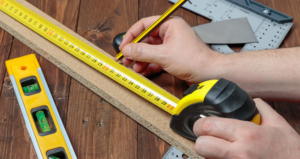Tools make us human, but we are not the only ones who use tools. Some birds drop rocks to crack shells open, and certain apes use sticks to get food or groom themselves. What makes us different is the thought we put into toolmaking, says Ian Tattersall, PhD, curator emeritus at the American Museum of Natural History in New York. Around 2.6 million years ago, our ancestors realized there was a superior type of rock for sharp-cutting edges (likely used to butcher animals). They chose these rocks, shaped them, and carried them for later use.
“If our predecessors had never started making stone tools, we would not be the reasoning creatures that we are today. The invention of the cutting tool opened a whole world of possibilities,” says Tattersall. The lever, however, might be the most important tool to advance civilization beyond meeting our basic needs of clothing and food, says Voula Saridakis, PhD, curator for the collections and archives at the Museum of Science and Industry in Chicago. “So many tools depend on the principals of the lever.” Wrenches, pliers, hammers, shovels, and jacks all helped build our world by harnessing the mechanical advantage of leverage.
Those descendants of the first levers are among our list of greatest tools, and they’re not the only ones with a mechanical lineage that dates back millennia. But all the tools here, new and old, and in no particular order, celebrate humankind’s capacity to shape the world.
Read more: Popular Mechanics
Ask me anything
Explore related questions





